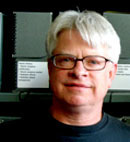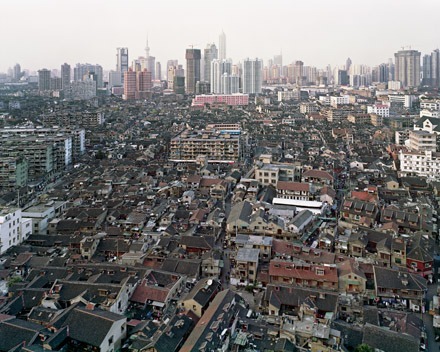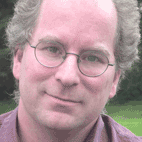Stewart Brand's Blog, page 95
November 21, 2011
Long Now Media Update

WATCH
Alexander Rose's "Millennial Precedent"
There is new media available from our monthly series, the Seminars About Long-term Thinking. Stewart Brand's summaries and audio downloads or podcasts of the talks are free to the public; Long Now members can view HD video of the Seminars and comment on them.







November 17, 2011
Rick Prelinger Ticket Info
Seminars About Long-term Thinking

Rick Prelinger on "Lost Landscapes of San Francisco, 6″
TICKETS
Thursday December 8, 02011 at 7:30pm The Castro Theater
Long Now Members can reserve 2 seats, join today! • General Tickets $10
About this Seminar:
Rick Prelinger, a guerrilla archivist who collects the uncollected and makes it accessible, presents the 6th of his annual Lost Landscapes of San Francisco screenings. You'll see an eclectic montage of rediscovered and rarely-seen film clips showing life, landscapes, labor and leisure in a vanished San Francisco as captured by amateurs, newsreel cameramen and studio filmmakers.
New material this year (presented for the first time in HD) will include San Francisco's lost cemeteries in color, unique drive-through footage of the Produce Market (now Embarcadero Center and Golden Gateway), rides along the newly constructed Embarcadero Freeway, back streets in working-class North Beach, new film showing the sandswept Sunset before its dunes were covered, wild automobile rides through downtown in the 1920s, newly-rediscovered Kodachrome Cinemascope footage of Playland and the Sky Tram, and much more.
Twitter - up to the minute info on tickets and events
Long Now Blog – daily updates on events and ideas
Facebook – stay in touch through our fan page
Long Now Meetups - join one or start your own







November 15, 2011
The Future According to Films
We found this wonderful visualization of future events from the world of film on infographipedia, courtesy of Tremulant Design. Most of the occurrences on the timeline take place during this millennium, though a few producers have ventured multi-millennial forecasts.







November 13, 2011
Long Now in Space
 (Astronaut removing the MISSE-7 Experiment with our sample on EVA1 on the STS-134 mission)
(Astronaut removing the MISSE-7 Experiment with our sample on EVA1 on the STS-134 mission)
Back in 02009 through a partnership with Applied Minds, and in turn the Air Force Research Lab (who generously invited us to include a sample), we sent one of our Rosetta materials on an experiment called MISSE-7 (pronounced "missey"), which flew on the International Space Station. This experiment is a shorter term version of the material research begun in 01984 with the Long Duration Exposure Facility. We sent a sample of commercially pure titanium, that was black oxide coated, and laser marked (pictured below left). This is the same material and oxide process that was used to create the front of the original Rosetta Disk. However we used a much lower power laser than was used on the Rosetta disk so the marking was not very deep. The sample was just returned to us (below right) after its stint outside the ISS and looks no worse for wear at all except for a slight fade in the clarity of the etching.


(Sample before it was sent on left and after returning on right)
This marks our second space rated Rosetta Disk material, the first one was the nickel material that is currently on the ESAs Rosetta Mission. Below is all the info I have found out about the MISSE-7 mission so far. I am trying to locate the section of the EVA videos where the experiment gets installed and removed. Any help is appreciated.
Samples went up on STS 129 (Atlantis) on Nov. 16, 2009
Samples were placed on the back side (wake) of the ISS on Nov. 23, 2009
Samples orbited Earth at ~8km/s
Samples returned to earth on STS-134 June 1 02011
INSTALLATION:
MISSE-7 installed during EVA 3 on shuttle Atlantis flight STS 129
Video CG Simulation of EVA 3, MISSE-7 at 2min, and 3:22
RETREIVAL:
MISSE-7 removed during EVA 1 on Shuttle Endeavors last mission STS-134.
Timelapse CG Video and description, opens with MISSE 7
Some great shots of it on the ISS:
http://www.nasa.gov/images/content/548353main_MISSE-77.jpg
http://www.nasa.gov/images/content/547356main_MISSE-75.jpg
http://www.nasa.gov/images/content/556618main_MISSE-79.jpg







November 11, 2011
Brian Eno on Colbert Nation
Mon – Thurs 11:30pm / 10:30c
Brian Eno
www.colbertnation.com
Colbert Report Full Episodes
Political Humor & Satire Blog
Video Archive
Founding Long Now board member Brian Eno was on Colbert last night and he got a chance to discuss Long Now and Clock Project. Also not to be missed is the end segment where Brian, Steven and Michael Stipe sing a-cappella.







November 7, 2011
Healthy Urbanization Requires Long-term Planning

Urban Renewal #4, by Edward Burtynsky
Researchers at the McKinsey Global Institute have been studying the process of urbanization – what works and what doesn't – and argue in this article that the detrimental effects of rapid city growth are not directly the result of insufficient resources. Rather, they stem from management that is neither comprehensive enough nor farsighted enough.
Does this imply that the future will be one of massive megalopolises spread across the globe? Theoretically, the answer is yes—there is no limit to the size of cities. In practice, however, the growth of most urban centers is bound by an inability to manage their size in a way that maximizes scale opportunities and minimizes costs. Large urban centers are highly complex, demanding environments that require a long planning horizon and extraordinary managerial skills. Many city governments are simply not prepared to cope with the speed at which their populations are expanding.
Theoretical physicist Geoffrey West spoke at The Long Now Foundation's SALT series in July of 02011 and discussed how cities tend to become more efficient and productive as they grow, and that they do so at an exponential rate. The challenge, as he described it, is that cities have to innovate faster and faster in order to keep up with superlinear growth. So how can city governments cope? The authors of the McKinsey Global Institute article, Richard Dobbs and Jaana Remes, outline four principles to guide the leaders of quickly growing metropolises:
First, successful cities need sufficient funding to finance their running costs and new infrastructure. Sources of funding could include monetizing land assets and levying property taxes, sales taxes, or user charges. Second, cities need modern, accountable governance; many large successful cities, including London and New York, have opted for empowered mayors with long tenures and clear accountability. Third, cities need proper planning that spans a 1- to 40-year horizon. Finally, all cities should craft dedicated policies in critical areas such as affordable housing.







November 2, 2011
Long Now Media Update

WATCH
Laura Cunningham's "Ten Millennia of California Ecology"
There is new media available from our monthly series, the Seminars About Long-term Thinking. Stewart Brand's summaries and audio downloads or podcasts of the talks are free to the public; Long Now members can view HD video of the Seminars and comment on them.







November 1, 2011
Dr. Laura Welcher at Berkeley Language Center, November 9th
The Berkeley Language Center will be hosting a talk by Long Now's Dr. Laura Welcher on November 9th. The talk is open to the public and starts at 3:00pm in Dwinelle Hall B-4.
The Rosetta Project at The Long Now Foundation is working to build an open public digital collection of all human language as well as an analog backup that can last for thousands of years–The Rosetta Disk. In the "long now," the goal is long-term storage and access to information–on the scale that both supports and transcends individual human societies and civilizations. In the "here and now," the project serves to support and amplify the importance of the world's nearly 7,000 human languages, the vast majority of which are endangered and, if current trends continue, likely to go extinct in the next 100 years. I'll present our current work on the Rosetta Project Collection and Disk as well as some new initiatives including the "Language Commons" where we are working to help build the multilingual Web.
There will be a reception afterwards; come say Hello.







October 31, 2011
Brewster Kahle Ticket Info
The Long Now Foundation's monthly
Seminars About Long-term Thinking

Brewster Kahle on "Universal Access to All Knowledge"
TICKETS
Wednesday November 30, 02011 at 7:30pm Cowell Theater at Fort Mason
Long Now Members can reserve 2 seats, join today! • General Tickets $10
About this Seminar:
As founder and librarian of the storied Internet Archive (deemed impossible by all when he started it in 1996), Brewster Kahle has practical experience behind his universalist vision of access to every bit of knowledge ever created, for all time, ever improving.
He will speak to questions such as these:
Can we make a distributed web of books that supports vending and lending? How can our machines learn by reading these materials? Can we reconfigure the information to make interactive question answering machines? Can we learn from past human translations of documents to seed an automatic version? And, can we learn how to do optical character recognition by having billions of correct examples? What compensation systems will best serve creators and networked users? How do we preserve petabytes of changing data?
Twitter - up to the minute info on tickets and events
Long Now Blog – daily updates on events and ideas
Facebook – stay in touch through our fan page
Long Now Meetups - join one or start your own







October 28, 2011
Old Data, New Uses

In the effort to understand our environment, scientists generally rely on natural observations to describe the earth's past. They examine tree rings, oxygen isotopes, sedimentary rock, pollen, and many other physical records from which we can glean information. These methods are quite fruitful, and when combined they offer compelling evidence. But wouldn't it be nice if, at least for the last few millennia, our ancestors had just recorded all of that information for us?
Occasionally they did, particularly when they encountered conditions or events that they considered extremely important. For example, swarms of locusts that ate all of their food. Conservation Magazine describes a project by a team of scientists in China who have compiled over 8,000 historical documents that chronicle the insect's effects:
"Outbreak of Oriental migratory locusts (Locusta migratoria manilensis) was, together with drought and flood, considered one of the three most severe natural disasters causing damage to crop production in ancient China," a team led by Huidong Tian of the Chinese Academy of Sciences in Beijing notes in the Proceedings of the National Academy of Sciences. "The earliest known written record of locusts was found inscribed on an ox bone in Oracle Script (Jiaguwen, the earliest Chinese script) 3,500 years ago, asking: 'Will locusts appear in the field; will it not rain?'" Ever since, local histories and government documents have been littered with detailed records of locust outbreaks.
The study has shown a link between dry conditions and locust outbreaks, providing a rare biological source of evidence for climate variations. Regardless of whether or not the authors of these documents intended for them to be useful to future generations, their efforts to describe and catalog their environment in an enduring medium have proven very valuable to us, thousands of years later.







Stewart Brand's Blog
- Stewart Brand's profile
- 291 followers





